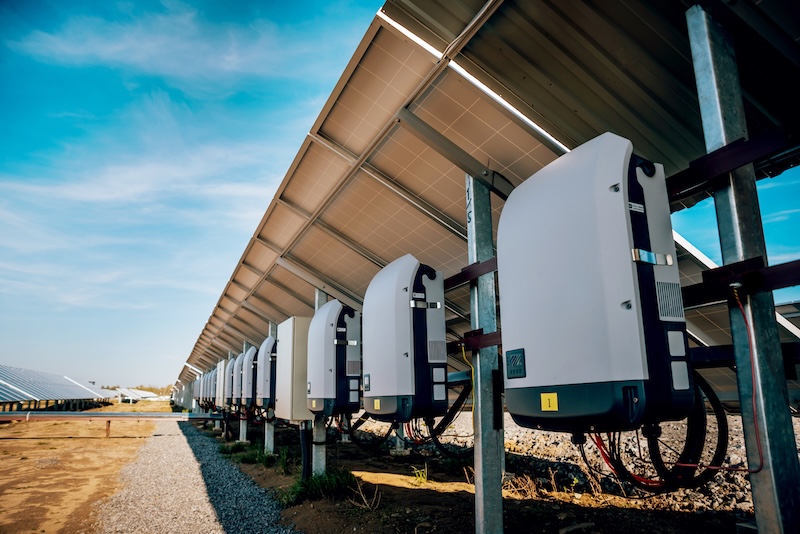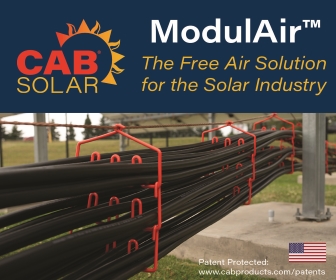Protecting Solar Inverters and Energy Storage Devices from High Heat
Designers of solar inverters and energy storage devices want to maximize efficiency and longevity. To improve efficiency, design innovations and material improvements are required. With solar inverters, this involves reducing energy loss during the conversion from direct current (DC) to alternating current (AC). With storage devices, energy loss must be reduced during charge and discharge cycles.
For both types of clean energy technologies, products with fewer in-field failures and longer service life promote customer satisfaction. Solar inverters and energy storage devices are part of a larger system that represent major capital investments. Buyers expect to make these purchases only once and do not want to replace key components or entire systems every five years.
.jpg)
Heat may not cause systems to fail prematurely, but it does cause electronics to become less efficient. In clean energy technologies, the sources of high heat include power electronics such as AC/DC converters and power rectifiers. Heat sources also include direct sunlight, poor ventilation, and internal component damage. Specific to energy storage devices is a risk of thermal runaway and fire.
Designers can select various cooling technologies, including forced air and liquid cooling, but thermal management at the system or enclosure level is not enough. Effective thermal management needs to reach the printed circuit board (PCB) and its heat-generating, yet heat-sensitive components. To achieve this, designers have a choice of materials, including advanced silicones.
Silicones for Thermal Management
Silicones are inorganic polymers that resist higher temperatures than organic materials like epoxies or polyurethanes. Silicones provide good environmental resistance, remain flexible and resist cracking caused by thermal cycling. They come in a choice of forms, such as encapsulants and adhesives, to address specific challenges. They also include products with a UL 94 V0 flame rating.
When specialized fillers are added, silicone compounds can provide the thermal conductivity that is required to move heat efficiently from a heat source to a heat sink. These silicones have higher thermal conductivities than the air that would otherwise fill gaps at the PCB level. Importantly, silicones for clean energy technologies can support greater manufacturing efficiency for lower operational costs.

Silicones for solar inverters
Solar inverters use four types of silicone products: encapsulants, thermal interface materials (TIMs), greases and gels. The first type, silicone encapsulants, are thermally conductive and flow readily to fill complex geometries in the inductance module. Their low viscosity makes them easy to dispense with automated equipment. Some products can cure without the use of energy-intensive ovens.
Silicone TIMs have higher thermal conductivities than silicone encapsulants. They are applied between the PCB and the insulated-gate bipolar transistors (IGBTs) used for high voltage switching. Silicone TIMs can be applied as pads with automated equipment. They can be screen-printed or stencil-printed for faster assembly than manual application can achieve.
Silicone thermal greases support thinner bond lines for more effective heat transfer. As a rule, these bond lines dissipate heat more effectively than thicker ones. With silicone thermal greases, their paste-like state optimizes surface wetting for reduced thermal resistance, the inverse of thermal conductance. Because they are non-curing, these greases also support rework for reduced waste.
Like silicone thermal greases, silicone thermal gels support thin bond lines and rework. These soft, compressible materials are also stress-relieving, which is important because electronic components with different thermal conductivities expand and contract at different rates. Silicone thermal gels also have a viscosity that allows them to flow readily. This can be an advantage over thermal pads, especially when solar inverters have small shapes and intricate geometries.
.jpg)
Silicones for energy storage devices
Energy storage devices use four types of silicone products: adhesives, encapsulants, gap fillers and foams. Silicone adhesives support component staking, resulting in fewer vibrations and less pressure on component leads. Silicone encapsulants fill gaps between heat sources and heat sinks. They also provide fire protection during normal operations and in the event of battery cell failure.
Silicone gap fillers also fill the gaps between a heat source and heat sink. Unfortunately, these products do so without component encapsulation, which provides enhanced protection. Silicone gap fillers provide stress relief and vibration dampening. They also have vertical holding power. These advanced materials support highly repeatable metering, spread readily and dispense quickly and accurately without after-flow.
Silicone foams, the fourth type of material for energy storage devices, are thermally insulating rather than thermally conductive. In other words, they reduce thermal transfers between objects that have different temperatures. Silicone foams offer a lightweight, fire-resistant alternative to silicone encapsulants, products that are thermally conductive rather than thermally insulating.
Improving thermal management
For designers of solar inverters and energy storage devices, it is important to remember that high heat can reduce efficiency and longevity. Designers need the right cooling systems, but they also need the most effective thermal management materials. Silicones are the best choice and come in a range of products. With help from the right partner, designers can excel at product selection and better meet customer needs.
 Cody Schoener is Marketing Manager at Dow Performance Silicones
Cody Schoener is Marketing Manager at Dow Performance Silicones
Dow Performance Silicones | www.dow.com
Author: Cody Schoener, PhD
Volume: 2025 July/August









.jpg?r=7479)


